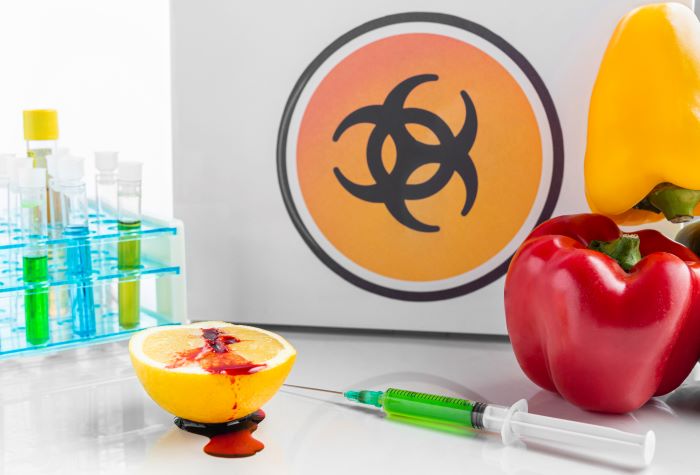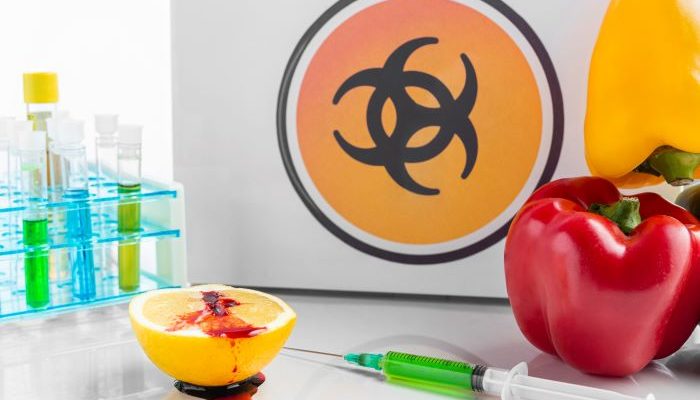
Foodborne illnesses are a growing public health concern worldwide, but among the many harmful pathogens, Listeria stands out as one of the most dangerous. Known scientifically as Listeria monocytogenes, this bacterium can contaminate a wide variety of foods and cause severe illness, particularly in vulnerable individuals. Recent global outbreaks have highlighted just how easily it spreads and how life-threatening the infection can become if not detected early.
This article takes an in-depth look at what makes Listeria outbreaks so serious—from how the bacteria survives to who is most at risk and the practical steps we can take to prevent it.
✅ What Is Listeria?
Listeria is a type of bacteria commonly found in:
- Soil
- Water
- Animal waste
- Raw foods
Unlike many other bacteria that cause food poisoning, Listeria has a unique and troubling characteristic: it can grow even in cold temperatures. This means that foods stored in the refrigerator are not automatically safe from contamination.
Once inside the human body, Listeria can cause listeriosis, a potentially severe infection that spreads through the bloodstream and can reach the nervous system, leading to:
- Meningitis
- Sepsis
- Complications in pregnancy
While healthy individuals may only experience mild symptoms, high-risk groups can face life-threatening outcomes.
🍎 Foods Most Likely to Be Contaminated
Listeria contamination is most often linked to ready-to-eat or minimally processed foods, including:
| High-Risk Food Category | Examples |
|---|---|
| Soft cheeses | Brie, Camembert, queso fresco |
| Deli meats | Ham, hot dogs, sausages |
| Unpasteurized dairy | Raw milk, unpasteurized cheese |
| Ready-to-eat salads | Packaged salads, cut fruits |
| Smoked seafood | Refrigerated smoked salmon |
These foods do not always go through a final cooking process, giving Listeria the opportunity to multiply and reach dangerous levels before consumption.
🧊 Why Listeria Is More Dangerous Than Other Foodborne Bacteria
1️⃣ It survives refrigeration
Most harmful bacteria cannot multiply at temperatures below 5°C (41°F). But Listeria grows in refrigerators, meaning:
- A small amount of bacteria can become a large colony over time
- Long fridge storage increases the risk drastically
2️⃣ It forms biofilms
Listeria can attach to surfaces and form biofilms—protective layers that stick to:
- Food processing equipment
- Cutting boards
- Kitchen appliances
- Biofilms are extremely hard to clean and can survive standard sanitization.
3️⃣ It can spread through the human body
Once consumed, Listeria can:
- Invade intestinal tissues
- Enter the bloodstream
- Travel to the brain or placenta
Few foodborne pathogens have such invasive capability.
👶 Who Is at Highest Risk From Listeria Infection?
Most healthy adults might only experience mild digestive symptoms like fever or diarrhea. However, listeriosis is especially dangerous for:
- Pregnant women
- Risk of miscarriage, premature birth, or stillbirth
- Newborn babies
- Severe bloodstream or brain infections
- Elderly adults
- Weakened immune systems struggle to fight infection
- People with chronic diseases
- Cancer, diabetes, kidney disease, or HIV
👉 In pregnancy, a mild infection in the mother can be fatal for the fetus. This makes Listeria a leading concern in prenatal health advisories.
📈 What Triggers Listeria Outbreaks?
Listeria outbreaks often trace back to a manufacturing or food processing facility where contamination goes unnoticed. Some common causes include:
✅ Poor sanitation on machinery
✅ Improper storage temperatures
✅ Cross-contamination from raw ingredients
✅ Ineffective cleaning of food-contact surfaces
Because Listeria spreads silently and grows slowly under cold storage, months may pass before an outbreak is detected.
➡️ By that time, contaminated products may already be widely distributed across cities or even countries.
🧪 Symptoms of Listeriosis: Early Detection Matters
Symptoms can appear from a few days to 70 days after exposure, making diagnosis challenging.
Common symptoms include:
- Fever
- Muscle aches
- Vomiting
- Diarrhea
Severe cases may progress to:
- Neck stiffness
- Confusion
- Loss of balance
- Convulsions
⚠️ Anyone in a high-risk group experiencing flu-like symptoms after eating high-risk foods should seek medical help immediately.
🔍 How Health Agencies Track Listeria Outbreaks
Modern laboratories use genomic sequencing, which allows experts to:
- Match infections to contaminated food sources
- Trace outbreaks back to factories or farms
- Remove unsafe products from the market faster
Public alerts and recalls help control outbreaks, but rapid consumer awareness remains essential.
🛡️ How You Can Reduce Your Listeria Risk (Practical Tips)
At Home ✅
- Keep the fridge below 4°C (40°F)
- Eat packaged salads and cut fruits immediately
- Wash raw produce thoroughly
- Keep raw and ready-to-eat foods separate
- Clean refrigerator surfaces weekly
For Pregnant Women ✅
Avoid:
- Deli meats unless reheated steaming hot
- Soft cheeses made from unpasteurized milk
- Refrigerated pâtés and smoked seafood
When Shopping ✅
- Check expiration dates
- Avoid damaged packaging
- Choose pasteurized dairy products
These steps greatly reduce the likelihood of Listeria exposure, especially when combined with safe food-handling practices.
🏁 Final Thoughts: Why Awareness Saves Lives
Listeria outbreaks remind us that food safety is not just the responsibility of manufacturers—it requires informed choices at every step from farm to home. Although many people may recover from mild cases, the risk to pregnant women, newborns, and those with weakened immune systems makes Listeria particularly dangerous.
By understanding how Listeria spreads, what foods are risky, and how to store and prepare foods safely, we can protect our families and reduce the number of severe infections. With better surveillance, public education, and strict hygiene in food production, we can prevent many future outbreaks.

